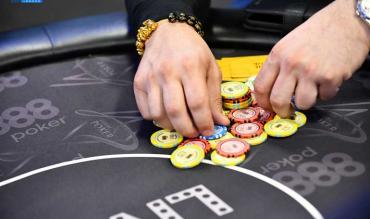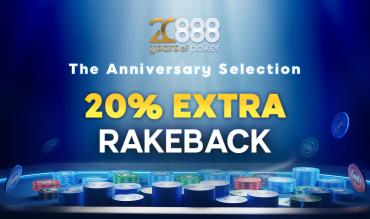Most poker players are familiar with the idea that they will be paying rake at the poker tables. Only a smaller percentage understand the details behind how rake works and how much rake they are paying.
A solid understanding of rake can make the difference between a winning and losing approach to poker.
In this guide to poker rake, we’ll consider the following -
What is Rake in Poker?
The poker rake is a fee the players pay to the room. In poker online games, it is a percentage deducted from the total size of the pot. This payment occurs automatically without any action from the players.
In live games, there is a similar approach. But there are additional methods a room might use to collect rake, such as time collection and dead drop.
Here is a quick summary of the different ways that cardrooms assess rake -
| Method | Description |
|
Pot Rake (% of pot) |
The poker room keeps a percentage of the total pot. Occasionally, this amount will be fixed per pot rather than a percentage. |
| Time Collection |
Every player contributes the same amount of rake after a specific time interval has passed. |
| Dead Drop |
The player on the button pays a set amount of rake. (The button moves around the table after each hand). |
The Rake and the Cap
Pot rake is most commonly measured using two values, the rake % and the cap.
- Rake % - This percentage (usually between 2 and 10%) represents how much of each pot the poker room will take as rake.
- Cap - The cap is the maximum amount of rake from any given pot.
Due to how these two values interact, a poker room with a higher rake % might be less expensive than a room with a lower rake %.
This scenario might happen if the room with higher rake % offered a low rake cap (and vice versa). On the flip side, a room with a low rake % could end up being very expensive to play if the rake cap is high. It depends in part on the average size of the pots played.
Example Rake Structure
The following table is from the Limits and Rake section of the 888poker website. (Note that these values are subject to change, this table is an example):

Firstly, the rake % varies depending on the limit. It’s relatively common for lower-limit games to have a higher rake % than higher limit-games. Also, note that the rake costs vary depending on the number of players in the hand.
We see that higher-limit games typically have a larger cap on face value. Having said this, we should generally consider the rake cap in terms of big blinds, not absolute values.
Thinking in terms of big blinds helps us understand how expensive a game is relative to the amount wagered.
- For example, the cap is $1 for the 2-handed games from $0.02/$0.05 all the way up to $2/$5. So, the higher-limit games are technically cheaper to play.
- In a $0.02/$0.05 game, we might pay as much as 20bb in rake for a single pot, while the maximum we’ll pay in a $2/$5 game is 0.2bb. That’s a huge difference!
Generally, we’ll need to achieve higher win rates in lower-limit games to stay profitable after paying rake. The fact that lower-limit games are easier to beat offsets this.
Calculating Rake
It’s one thing to know about the rake % and rake cap. Now let’s see an example of how to calculate rake in practice.
6-handed game at $0.05/$0.10 - Two players are all in from $10, and the total pot is $20.
How much rake does the room take?
The table above shows that the rake is 5%, and the cap is $2. We know that the absolute maximum the room can take is $2 in this case.
The total pot is $20, and 5% of this is $1. The room takes $1 or 10bb in rake, so the cap is never reached in this case.
The winner of the pot will be awarded $19 rather than $20.
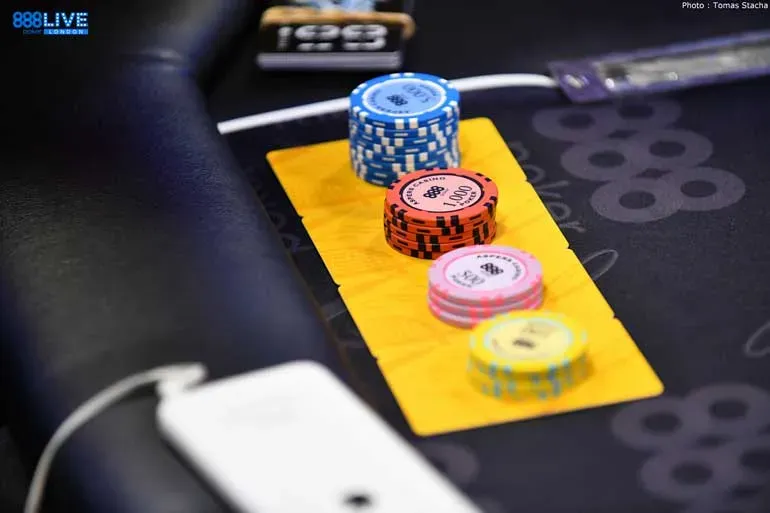
Compare the same hand at $5/10 with a $2,000 pot.
Consulting the table above, we see that the rake is still 5%, but the rake cap is now $5.
The total pot is $2,000, and 5% of this is $100. But this amount is more than the cap. So, the room only takes $5 or 0.5bb in rake (the amount of the cap).
The absolute amount of rake is higher in our second example ($5 instead of $1). But the higher-limit game is relatively cheaper in terms of the number of big blinds that go to the room.
Why Do We Care About Rake?
The rake we pay can make the difference between being a profitable or a losing poker player.
- We don’t just need to be better than our opponents to win.
- We need to win by enough that we still have remaining profits after rake.
Lower rake environments can help us to rise up the ranks quickly and grow our bankroll.
On the flip side, say the rake is so high that a typically winning player can’t make profits. The poker industry refers to this as a rake trap. As we'll discuss later, high rake amounts can be offset somewhat by rakeback.
No Flop, No Drop
Most poker rooms only take a percentage of the pot in hands where a flop is seen. This policy is known as no flop, no drop.
This situation is not a guarantee in every room. So, it's worth checking if a room rakes preflop pots. We can't simply compare the rake % and rake cap if one room rakes preflop pots and another does not.
888poker follows the no flop, no drop policy and does not take rake until after a flop is dealt.
Estimating Paid Rake
Ideally, we’d know roughly how much rake we’ll pay to a poker room over a given period. Just as in the case of running a business, it’s logical to generate an idea of our outgoings before we start trading.
Rake paid is often measured in big blind per hundred hands, the same metric used to describe poker win rates in general.
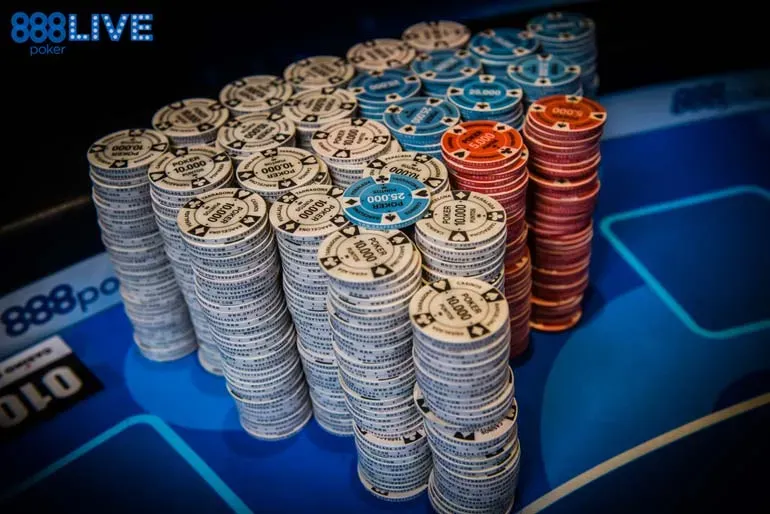
Rake paid is more complex to calculate in advance. The percentage of rake taken will change depending on the size of the pot. Some pots hit the rake cap, while others don't.
So, the best way is to play a volume of poker hands in a specific game. Then figure out how much rake we have paid. Online players can use poker tracking software to show rake paid in big blinds per hundred hands. This resulting number will give us a rough idea of how much rake we can expect to pay going forward.
We might ask another player how much rake they are paying in bb/100 hands in a particular game. While this might be a reasonable starting point, it’s essential to keep in mind that the amount of rake paid is related to our style.
An extremely loose-aggressive player can pay more than twice as much rake as a tight-passive player.
What is Rakeback?
Many poker rooms return a percentage of paid rake back to the players. This scheme is commonly referred to as rakeback.
Rakeback typically comes in the form of some loyalty programme. A poker room might use something other than rakeback to describe their offer.
For example, 888poker offers the 888poker club at the moment of writing. Players earn gold coins for their play at the tables which they can redeem for prizes, including cash bonuses. This offer is a form of rakeback.
Players often like to try and calculate their rakeback amount as a percentage of the rake paid. For example, if a player gets 20% rakeback, they will get $0.20 back for every $1 they rake for the room.
It’s always worth reading through how the loyalty system works on a specific site. Some are more valuable than others.
- Some are tailored towards specific types of players.
- Several reward extremely high volume.
- Various reward losing players more heavily.
- Others reward consistency (such as playing every day, even if only for a short time).
Rake Races
A rake race is a rakeback programme that rewards players who put in the most volume (i.e., pay the most rake) over a specific period.
This promotion is great for high-volume players. But one downside is that it potentially promotes unhealthy playing habits as rake races can get highly competitive. A daily rake race might require a player to play 16+ hours to take home the top prize.
Rake race prizes can be substantial and easily result in players making more than 100% of their rake back. (They are essentially winning a cut of the rake paid by other players in the pool).
While the poker rooms may sometimes offer rake races, poker affiliates may also carry them. Affiliates are companies that have referred players to the poker room and receive a cut of their rake as payment.
They encourage their referred players to put in high volume by offering rake races as an incentive.
Tournament Rake
Tournament rake is handled differently than cash game rake. Rather than raking each pot, all players entering a tournament will pay a rake fee upfront, known as a tournament fee or entry fee.
The buy-in amount for a tournament is split into two parts -
- The main buy-in amount goes towards the tournament prize pool.
- The tournament or entry fee (rake) goes to the poker room.
For example, an 888poker online tournament has a buy-in of $3.30.
By visiting the tournament lobby in the 888poker client, we can see the breakdown of the buy-in. $3 is the tournament buy-in, and $0.30 is the entry fee that goes to the room.
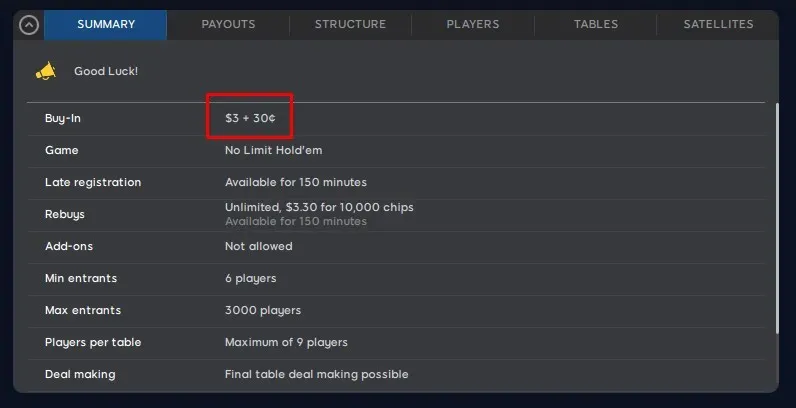
Rake - The Key Takeaways
Here is a quick summary of what we have learned about poker rake –
- Rake is a fee taken from the players by the poker room
- Rake % and rake cap describe rake for cash games
- Tournaments have an entry fee that goes to the poker room
- Rakeback is a percentage of rake returned to the player as a reward
- Rake and rakeback can have a significant impact on our overall earnings
